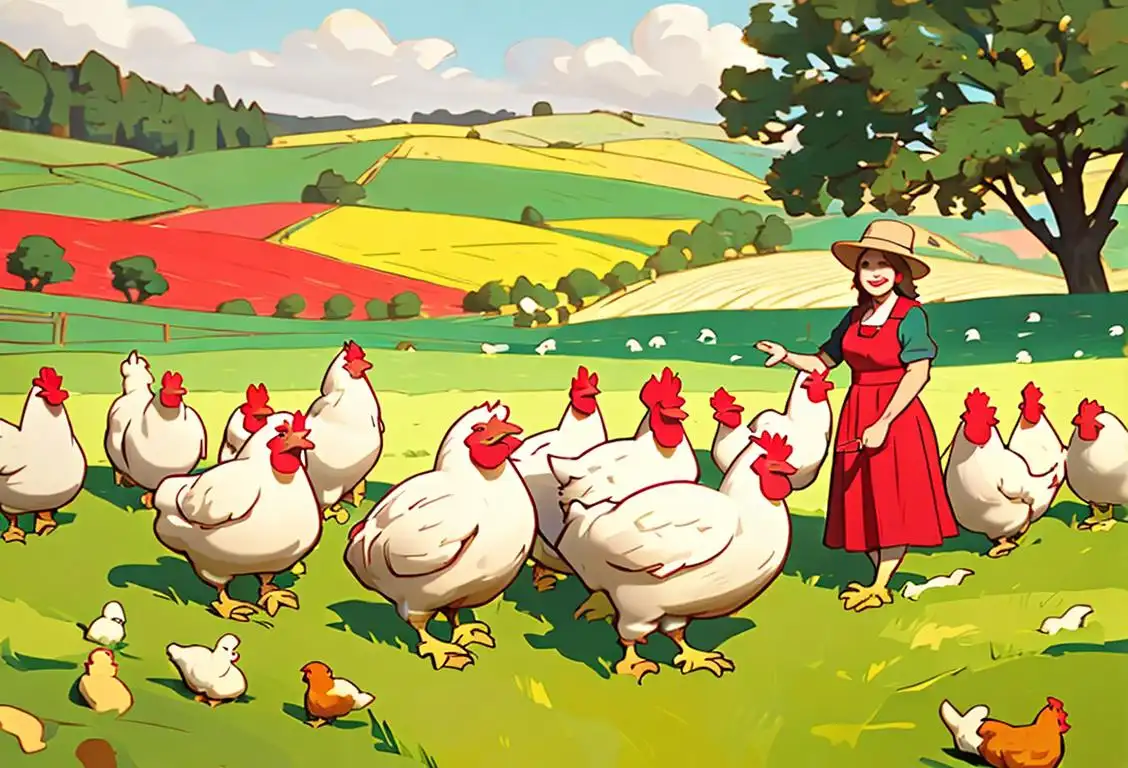National Left Over Day

Hey there, food lovers and leftovers enthusiasts! Get ready to savor the deliciousness of National Leftover Day, a day dedicated to conquering the leftovers in your fridge. Whether it's that scrumptious turkey from Thanksgiving or pasta from last night's dinner, this is the perfect opportunity to turn those leftovers into a gastronomic masterpiece. So grab your apron and let's dive into the delightful world of leftovers!
When is Left Over Day?
It's national left over day on the 24th November.
The Internet and National Leftover Day
While National Leftover Day may not have an extensive history on the internet, it has gained quite a following over the years. People have taken to social media platforms to share their creative ways of repurposing leftovers. From mouthwatering recipes to hilarious anecdotes about brave attempts to finish a week-old slice of pizza, the internet is teeming with leftover-related content.
A Historical Take on Leftovers
The concept of leftovers dates back centuries. In ancient times, leftovers were considered a symbol of wealth and abundance. If you had enough food to have leftovers, it meant you were living a prosperous life. Fast forward to modern times, leftovers have become a way to minimize food waste and get creative in the kitchen. It's all about reducing, reusing, and reimagining!
Leftover Ideas That Will Make Your Taste Buds Dance
Looking for some inspiration to level up your leftover game? We've got you covered!
- Turkey Ramen: Transform that leftover turkey into a flavorful ramen bowl by adding some broth, veggies, and noodles. It's comfort food at its finest!
- Pizza Quiche: Give your day-old pizza a breakfast twist by turning it into a cheesy quiche. Just add beaten eggs, milk, and your favorite toppings. Yum!
- Potato Croquettes: Give yesterday's mashed potatoes a new life by shaping them into croquettes and frying them until golden and crispy. Pair them with a dipping sauce for extra deliciousness.
Remember, the possibilities are endless when it comes to leftovers. Let your culinary creativity shine!
History behind the term 'Left Over'
1851
Food Preservation
The term 'left over' originated in the mid-19th century when people started using food preservation methods to reduce waste. This practice became more common as advancements in refrigeration and canning techniques were made.
1842
Introduction of the term 'left over'
The term 'left over' was first introduced in 1842. It originated from the phrase 'left to be over,' which referred to something that remained after completion or consumption. This term was primarily used to describe food that was not eaten and was left behind after a meal.
1859
The Introduction of Insurance Policies
In the year 1859, insurance companies began introducing policies that covered the losses incurred by shipwrecks. These policies often accounted for goods that were damaged or lost during the voyage. As a result, the term 'left over' came into existence to describe the remaining goods that were not destroyed or lost in a shipwreck.
1909
Leftover Revolution
In the early 20th century, as more households had access to refrigerators, the concept of leftovers became more prevalent. People started intentionally cooking extra food to ensure that there would be leftovers for future meals, sparking a 'leftover revolution' in many kitchens.
1916
The Emergence in Cookbooks
Around the year 1916, 'left over' started to appear in cookbooks, marking the concept of using the remaining food from previous meals. With the increase in household efficiency and a focus on minimizing waste during World War I, the term gained popularity as a way to describe the surplus food that could be repurposed or consumed as part of a frugal approach to cooking.
1864
Widespread usage during the American Civil War
During the American Civil War (1861-1865), the term 'left over' gained significant popularity. It was commonly used by soldiers to refer to food that was not consumed and remained from their rations. The scarcity of food during war times made the concept of leftovers more prevalent.
1960
The Extension to General Use
By the 1960s, 'left over' had extended beyond the context of insurance and cooking to become a widely used term in everyday language. It became more inclusive and applied to any object or substance that remained unused or unutilized after a particular event or activity. This evolution in usage solidified 'left over' as a versatile term that could be adapted to various situations and contexts.
1890
Shift in meaning to include non-food items
By the late 19th century, the term 'left over' started to expand its meaning beyond just food. It began to encompass objects or items that were unused or remaining after a particular event or activity. This broadened definition allowed the term to be applicable in various contexts.
1930
Nickname Emerges
By the 1930s, the term 'left over' had become a commonly used phrase to refer to excess food. The popularity of the term was likely due to its simplicity and straightforwardness.
1940s
Rise in popularity due to World War II rationing
During World War II (1939-1945), rationing became widespread, and the concept of leftovers became even more significant. Food scarcity led people to be mindful of not wasting any edible items. 'Left over' became a commonly used term by both the military and civilians to describe the remnants of meals or supplies.
1990
Cultural Acknowledgment
In the 1990s, the term 'left over' gained cultural acknowledgment, as it became associated with post-Thanksgiving meals in the United States. This was due to the abundance of food typically prepared for the holiday, leading to a surplus of leftovers. Thanksgiving leftovers, including turkey sandwiches and casseroles, became emblematic of American culinary culture, further solidifying 'left over' as a term deeply embedded in society.
1950
Marketing and Leftovers
In the 1950s, food companies realized the potential of marketing leftover recipes to help families save money and reduce waste. They began promoting creative ways to use leftovers in advertisements, cookbooks, and recipe cards.
1960s
Cultural shift towards valuing leftovers
In the 1960s, there was a cultural shift toward being more mindful of food waste and the importance of utilizing leftovers. The concept of leftovers started to be associated with frugality and resourcefulness. Cookbook authors and chefs began to promote creative recipes for leftovers, highlighting their potential and encouraging their consumption.
Present
Continued Relevance and Creativity
Today, 'left over' continues to be an integral part of our everyday vocabulary. With the rise of sustainable living and minimizing waste, finding creative ways to repurpose and utilize leftovers has become a popular trend. From transforming yesterday's dinner into a delicious lunch to repurposing materials in arts and crafts projects, the concept of 'left over' exemplifies resourcefulness and contributes to a more sustainable lifestyle.
1970
Cultural Shift
During the 1970s, the cultural shift towards environmental awareness and sustainability further emphasized the importance of reducing food waste. The term 'left over' became associated with a mindful approach towards resource management and conservation.
Present
Modern Usage
Today, the term 'left over' remains a common part of everyday language. It is associated with economical cooking, meal planning, and a conscious effort to minimize food waste. Leftovers are valued for their convenience and practicality, often celebrated as a great way to save time and money.
Present day
Continued significance and evolving meanings
Today, the term 'left over' remains a common part of everyday language. It signifies anything that is remaining or unused, not just limited to food. The cultural impact of leftovers lies in its ability to reduce waste, promote sustainability, and encourage creativity in finding new uses for things that might otherwise be discarded.
Did you know?
Did you know? The Guinness World Record for the largest sandwich was set on National Leftover Day! It weighed a whopping 5,440 pounds and used over 2,000 pounds of leftover ingredients. Now that's what we call a giant culinary creation!Tagged
nsfw food funFirst identified
27th November 2015Most mentioned on
24th November 2017Total mentions
32Other days
Chocolate Mousse Day
Something On A Stick Day
Children Day
Awareness Day
Frappe Day
Taco And Vodka Day
Happiness Day
Opposite Day
One Day
Poultry Day









